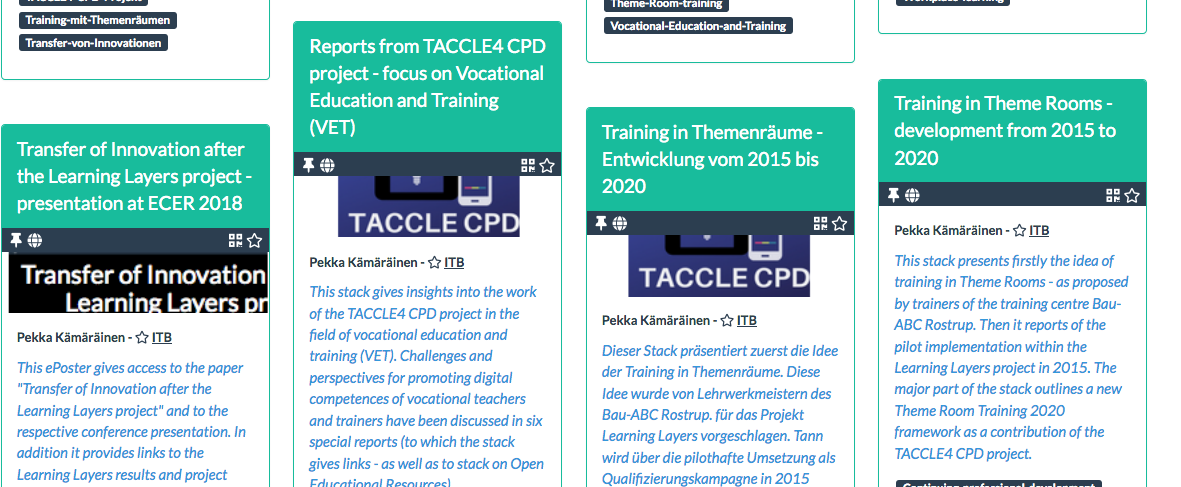Multiplier Event of TACCLE4 CPD project – Part Two: Presenting the LTB-Showcase of the TACCLE4 CPD project
In my previous post I gave a report on the Multiplier Event of our current EU-funded project TACCLE4 CPD. The event took place on Friday the 16th of October in the German training centre Bau-ABC Rostrup in North-Germany. As regular readers of this blog know, Bau-ABC was an important application partner in our earlier EU-funded project Learning Layers (2012 – 2017). Their collaboration was crucial for the development of the main product of the project – the digital toolset Learning Toolbox (LTB). As I have also reported, how the LTB has been used across the training centre in all apprentice training programs.
During the current project I have made several working visits to Bau-ABC. On several occasions I have discussed with Bau-ABC trainers on challenges and perspectives for promoting digital competences in the context of vocational learning. These interviews gave me plenty of food for thought when I prepared my reports for the project. In the previous post I gave an account on my input and reported briefly on the discussions that we had during the session. I also mentioned that I had prepared a showcase that was powered by the LTB. In this post I try to give insights into the showcase and its contents.
The idea of preparing an LTB-showcase for TACCLE4 CPD project
I have already presented the LTB Showcase of the LTB-developers in an earlier blog post. In that showcase they had given on overview of several conferences and online events in which LTB had been used to produce ePosters for the respective events. Given the success of these ePosters, the LTB-developers had created the format of showcase to select the ePosters of one event under a common banner. With regular users they had created cumulative showcases that contain ePosters of several years. With this newest showcase the LTB-developers had provided an overview on different user-events. And by tagging the individual ePosters with the name of the user-event they made it possible for the viewers to access the specific showcase of that event. In this way I became aware that there had already been a case in which an Erasmus+ project had organised a virtual multiplier event by creating an LTB-showcase for the project and then making it accessible for virtual participants.
This gave me inspiration of preparing a similar showcase to support the forthcoming Multiplier Event that was under preparation. I understand that I have used specific terminology that doesn’t necessarily communicate clearly, what kind of product I was making. Perhaps one can characterise an ePoster (which is technically an LTB-stack) as a digital bookshelf that contains a collection of digital documents and other digital resources. The showcase that contains several ePosters (or LTB-stacks) can then be characterised as a small digital library. And the major showcases of the conferences can then be characterised as major ‘thematic libraries’, whilst the overarching LTB Showacase is a central library that refers to the ‘thematic libraries’.
Overview on the contents of the TACCLE4 CPD Showcase
Below I will first present screenshots of the contents of the showcase and of the banner that links them to each other:
I guess that the screenshots above give an impression of the kind of digital contents that have been packed to the showcase. Some of these contents have been prepared as ePosters for conferences. Some have been prepared as LTB-stacks that present project reports for the TACCLE4 CPD and Learning Layers projects.
I guess this is enough for a moment. Later on I will prepare a separate report that gives more detailed insights into the contents and explains how they can be accessed.
More blogs to come …







